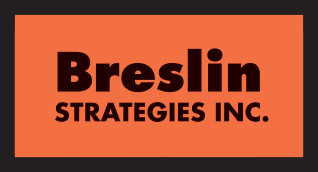More than three million people quit their jobs this year. That number is up 35% in the last five years. (Wall Street Journal, 2018)
51% of people polled say they are considering leaving their existing position. (Gallup, 2017) That is one half of your workforce. Today.
Among millennials, 43 percent envision leaving their jobs within two years, and only 28 percent are looking to stay beyond five years. (Millennial Survey, Deloitte, 2018)
Culture, Purpose and Talent Today
If the construction industry has a head, it is only in the last several years that it popped out of a very dark place. In the past, leaders in this business (which my family has worked in for four generations) didn’t care about culture. They cared about production. They didn’t care about “culture” when “authority” is what got the job done. They didn’t worry about retention or next generation leadership training, because the general idea was “If you can’t do it, I’ll find someone who can.” Well, the evolution of culture in construction is underway in a profound manner. And what is driving it is a simple formula. Here it is:
In today’s market, talent will flow to where it is valued most.
Notice I did not say where it is paid the most. Money is certainly a mandatory component of the workplace relationship. But I hate to break the news: if you have an employee leave you, most likely it is YOUR FAULT.
Here’s why. Based on almost every study (and the younger the employee, the more accurate this is) people work at an organization (and stay there) because of two major drivers. Here they are in order:
1. CULTURE: what is the prevailing culture around employment? This constitutes elements such as:
- How much effort does the company and my boss make to emphasize my value?
- How much feedback do I get on my performance?
- How interested is my organization in developing my talent and career?
- Do my company and supervisor display the commitment, ethics, transparency and work ethic that make me want to emulate them?
- Do they display trust and loyalty?
- Can I do my best work and be my best self in the environment?
Creating this kind of culture takes work. It means being open to change – driving change – and accepting that you have to meet people where they are, and not where you are. Or you can try to keep them by paying them more money until they leave anyway.
2. PURPOSE: a sense of purpose is now often cited as the number one priority for young talent, particularly as it relates to retention. Purpose sounds like this:
- Do I understand the real mission of the company and how I fit in?
- Does the work I do matter? And how do I know that?
- Are the plans and direction of our organization communicated to me effectively?
- Am I given the freedom and autonomy to create the best outcomes?
- Am I listened to?
Purpose now vs. purpose before? As a Boomer, my purpose was pretty damn simple: WORK HARD, GET AHEAD. Now people want and expect more, and most importantly, they can get it – if not from you, then from someone else. Another question worth asking is if the “union construction field experience” is one that promotes a positive culture and purpose. In my view, a serious upgrade is needed in this regard, with senior leaders driving this change.
Of all the things I do as a CEO, with hundreds of member companies and dozens of staff, two interrelated roles make all the difference. One is my role as Talent Picker and the other is Culture Creator & Protector. With the amount of attention paid to talent selection, the reputation of my employees is one of being “A” Players. Not every role, every year, all the time, but on balance for a small business, I hire talent for culture and fit — not skills. If I want a superstar, then I have to know they will thrive within the culture; one focused on purpose and growth. It is no mistake that a good number of our “alumni” have gone on to CEO, SVP and other top jobs around the nation. We get ‘em. We grow ‘em. And they jump out of the nest with our encouragement. But for them to thrive, the culture is the platform for talent development and retention.
You note that I wrote not only Culture Creator but also Protector. That’s because it’s not enough to just set up the culture and expect it to thrive and support the best behaviors, growth and outcomes. No. Because people will always test it. People will bring habits from previous employment. People will fill in the blanks if you don’t have a firm framework and they will often be outside the lines. Senior management owns culture and must protect it with all they got. That’s it.
So in a hot talent market, or in an industry of unlimited upward mobility, these are the two starting places for your strategy—Culture and Purpose. The next time someone comes to you and says they got “a better offer,” put aside the money issue and ask yourself honestly if you have put enough effort into these leadership priorities. Culture and purpose are the anchors, and money is often just the excuse. What they don’t want to tell you is that you failed. Try not to get pissed at them until you have engaged in leadership self-reflection. It will be worth the time and effort; and not just now, but in your business and market strategy long-term.
Visit this link to learn about next generation leadership training.
